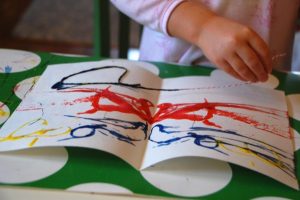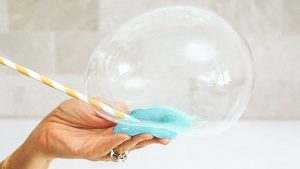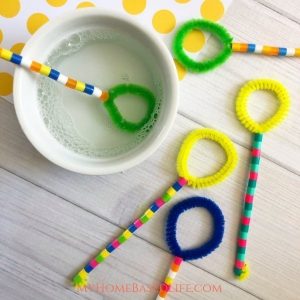 Written by Renise, Sarah, Shelby, and Tiffany, staff members
Written by Renise, Sarah, Shelby, and Tiffany, staff members
Summer is finally upon us and, like many parents, you may be struggling to keep your children engaged and active. Sensory play could be the answer for curing summer boredom and getting your children outdoors.
The benefits of sensory play
You may be thinking, “Isn't sensory play for preschoolers?” Actually, no. Sensory play is a great activity for children (and adults) of all ages. In fact, play-based learning and sensory activities play an important role in your child’s development until at least age seven.
Sensory play helps to:
- Encourage exploration and investigation by stimulating your child's senses
- Form new neural pathways in the brain
- Develop motor skills
- Sharpen scientific thinking and problem solving
As an added benefit, sensory activities are a great way to introduce mindfulness to your child.
At the Library, our three favourite sensory activities are paint, bubbles, and slime. These are activities that your child has likely done before, so let’s talk a bit more about how you can take these activities to the next level.
Paint
Paint is a great way to explore different materials. There are as many ways to use paint as there are items you can use as paint. Instead of traditional paper, paint on a canvas, fabric, wood, rocks, or even glass. You could also try different objects as your canvas. And, instead of a paint brush, try using a sponge, cotton swabs, bubble wrap, cookie cutters, or even your hands.
Activities with paint
- Use string or pipe cleaners to paint different lines and pictures.
- Add a drop of paint and use a straw to blow the paint in different directions.
- Paint on one side of a paper and fold the paper in half to make a symmetrical painting.
Challenge yourself
- Find some leaves to paint on and stamp the print on paper. What else can you find in nature to use for painting?
- Collect some rocks to paint and take them with you on your next walk to place along the trail for others to enjoy.
Slime
The recipe for making slime, opens a new window is fairly straightforward but it can be messy. For this reason, there is no better time to make slime than in the summer, because you can take the whole thing outside. Like paint, the possibilities with slime are endless. Slime can be stored in a Ziploc bag and should last for a week or more.
NOTE: Slime should not be ingested so if there are little ones around, adult supervision is recommended.
Activities with slime
- Practice making your name, numbers, letters, and shapes.
- Use a potato masher to mash your slime and observe what happens.
- Make a slime bubble by rolling your slime into a ball, sticking a straw in it and blowing.
Challenge yourself
- Have contests with members of your household to see who can blow the largest slime bubble, how far you can stretch the slime, and more.
Bubbles
When your child was a baby or toddler, chasing and popping bubbles may have kept them entertained for hours. Blowing and popping bubbles may not be as entertaining for an early elementary aged child as they once were, but with a little creativity, they are still a great option and can provide hours of fun.
Activities with bubbles
- Pour bubble mixture and food colouring into a container and blow bubbles with a straw until they overflow. Gently place a piece of paper on top of the bubbles. When you lift the paper, you should see colourful bubbles on the paper.
- Make bubble wands using all kinds of materials around your house like string, yarn, pipe cleaners, or twist ties. Bend these items into all kinds of shapes and try them out.
- With an adult's help, cut the bottom off of a plastic bottle and place a sock over the bottom. Secure the sock with a rubber band, dip into bubble mixture, and blow!
Challenge yourself
- Have a contest with your household to see who can make the largest bubble or see whose bubble can travel the furthest through the air.
- Challenge a friend to find out who can keep their bubble from popping the longest.
Sometimes all our children need is a nudge to get started. Before you know it, your child will be coming up with new ideas on how they can use paint, slime and bubbles all on their own. Let us know what you end up creating by emailing us at hplkids@halifax.ca or tagging us on social media at @hfxpublib.





Add a comment to: Sensory Play for All Ages